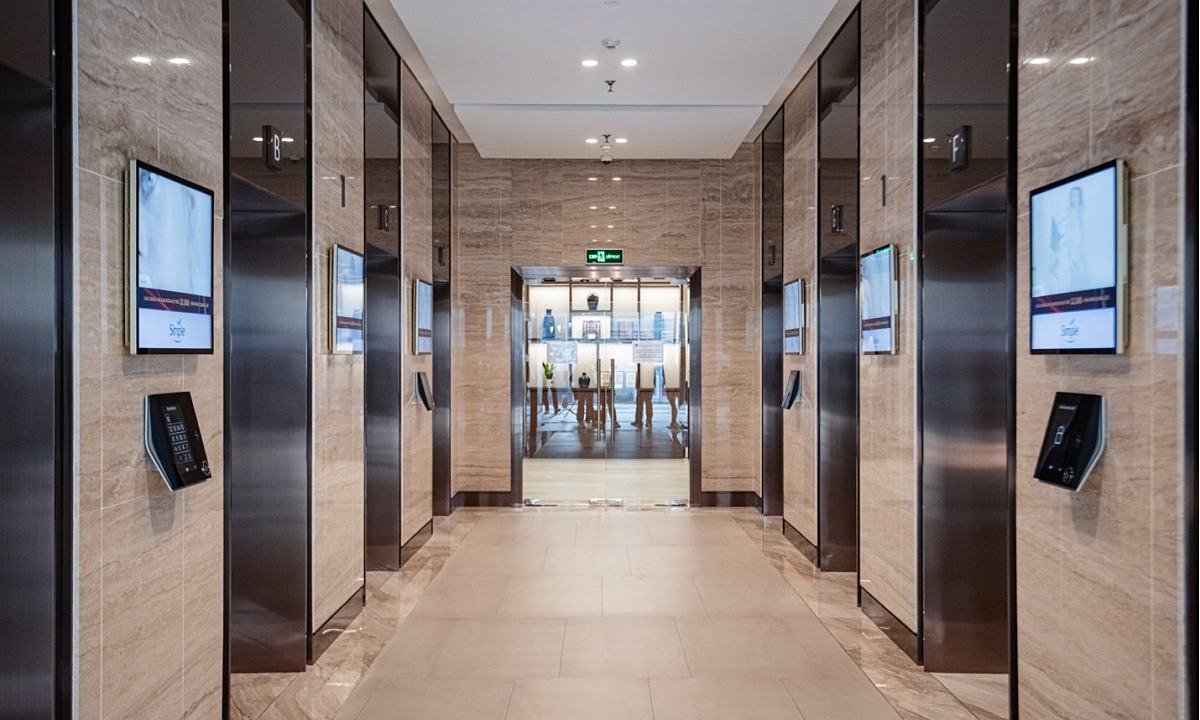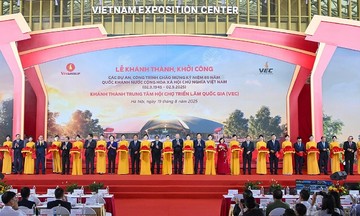Kantar Media Vietnam recently released its Q1 2025 advertising effectiveness report, focusing on the media performance of advertising formats using installed screens. According to the report, Chicilon Media currently operates 32,800 screens nationwide, all installed in key locations that meet communication standards.
In the "effective screen" market within the building advertising sector, Chicilon Media holds over 90% of the market share. While other companies in the market have up to 14,400 advertising screens in elevators, only nearly 25% meet effective communication standards, equivalent to about 3,600 screens, accounting for less than 10% of the effective screen market share nationwide.
 |
The screens are installed in locations that ensure high effectiveness and aesthetics. Photo: Chicilon Media |
The screens are installed in locations that ensure high effectiveness and aesthetics. Photo: Chicilon Media
A Chicilon Media representative stated that digital advertising in elevators is becoming a key strategy for major brands. In this context, the selection criteria are no longer based on the number of screens owned, but focus on three factors: the actual effectiveness of each placement, the quality of the building, and the content being conveyed. A placement is considered standard when the screen is installed in the front area of the elevator, unobstructed, and not located in freight elevators, emergency exits, or sparsely populated floors.
The building should have 11 or more floors, with a minimum floor area of 380 m2 per floor, ensuring a sufficiently large user density. Regarding content, advertising messages need to be easy to see, memorable, and capable of driving conversions.
The company representative noted that some companies include substandard screens in their total reports, while applying low-price policies such as "buy one, get 20 free" and "free broadcasting" to attract customers. These practices reduce communication effectiveness, affect brand recognition, and negatively impact the entire industry.
In addition, many companies organize events to self-proclaim "global building advertising standards" to legitimize substandard placements. This approach can confuse the market, erode the trust of advertising companies, and lead to inconsistent perceptions of communication effectiveness.
In an increasingly competitive market, many brands in fast-moving consumer goods, banking, insurance, automotive, and electronics are actively reviewing their existing advertising systems. They conduct field assessments to verify placement quality, display effectiveness, and actual conversion capabilities.
In response to this demand, Chicilon Media commits to publicly disclosing placement data, publishing interaction levels, and implementing independent monitoring systems. These actions aim to establish clear communication standards that can be verified and measured for concrete effectiveness.
As the market redefines true value, brands need to be more cautious in their investment decisions. Media budgets should be allocated rationally, focusing on placements that can effectively reach customers, deliver clear results, and create a foundation for sustainable brand development.
(Source: Chicilon Media)












